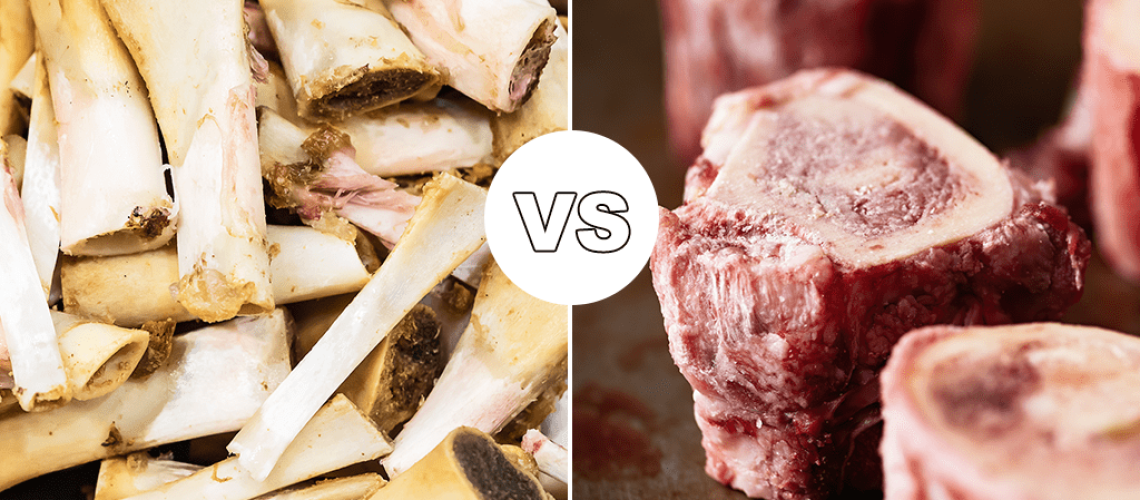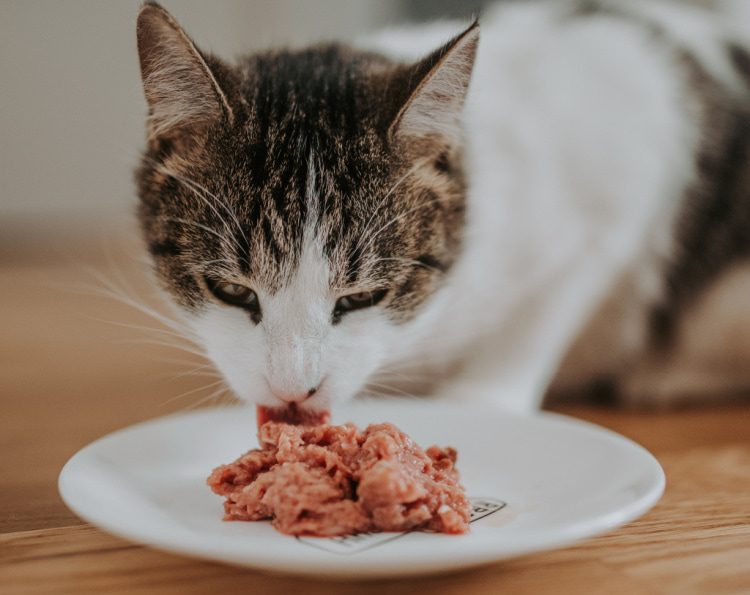Key Takeaways:
- Bones can pose serious health risks to dogs, including choking, intestinal blockages, and dental fractures.
- Some bones, such as cooked or small bones, are particularly dangerous and should never be given to dogs.
- Even raw bones can carry bacteria like Salmonella, which can make dogs sick.
- Instead of bones, it is safer to provide dogs with appropriate chew toys or treats that are specifically designed for their dental health.
- If you suspect your dog has ingested a bone or is showing signs of distress after consuming one, it is important to seek veterinary care immediately.
Are Bones Safe for Dogs? Discover the Secrets to Keeping Your Furry Friend Healthy and Happy!
Do you love spoiling your four-legged companion with treats? If so, it's crucial to delve into the topic of whether bones are safe for dogs. Understanding this subject is essential for every responsible pet owner, as it can directly impact your furry friend's well-being.
Imagine being able to confidently choose the right treats for your dog, knowing that they are not only delicious but also safe. By exploring the safety of bones, you'll gain valuable insights into what's best for your canine companion.
Did you know that according to a recent survey, 76% of dog owners give their pets bones as treats? While it may seem like a common practice, there are hidden dangers that many aren't aware of. That's why taking the time to educate yourself on this topic is vital.
In this article, we will uncover the truth behind giving bones to dogs and provide you with expert advice on keeping your furry friend happy and healthy. So, let's dive in and ensure your pup receives only the best care possible!
What are bones and why do dogs like them?
The Nature of Bones
Bones are hard structures that make up the skeleton of animals, including dogs. They provide support, protect vital organs, and allow for movement. Bones are made up of minerals like calcium and phosphorus, which give them their strength. In addition to their structural role, bones also contain bone marrow, which produces blood cells.
Dogs and Their Love for Bones
Dogs have a natural instinct to chew on things, and bones provide the perfect outlet for this behavior. Chewing on bones helps keep a dog's teeth clean by removing plaque and tartar buildup. It also exercises their jaw muscles and provides mental stimulation. The act of chewing releases endorphins in a dog's brain, making them feel good and satisfied.
Many dogs enjoy the taste and texture of bones as well. They can spend hours gnawing on a bone, savoring every bite. The act of chewing also helps relieve boredom or anxiety in dogs.
Can chewing on bones hurt or injure dogs?
Chewing on bones can pose certain risks to dogs if not done properly.
Potential Risks
1. Broken Teeth: Dogs may fracture or break their teeth while chewing on hard bones.
2. Choking Hazard: Small pieces of bone can break off and become lodged in a dog's throat, causing choking.
3. Intestinal Blockage: If a dog swallows large chunks of bone, it can lead to an intestinal blockage that requires surgery to remove.
4. Mouth Injuries: Sharp edges or splinters from bones can cause cuts or punctures in a dog's mouth.
While these risks exist, they can be minimized by choosing the right type of bone for your dog and supervising their chewing sessions.
Which types of bones are safer for dogs to chew on?
When it comes to choosing bones for your dog, not all are created equal. Some types of bones are safer than others.
Safer Bone Options
1. Raw Bones: Raw, uncooked bones from animals like beef or lamb can be a good choice. They are softer and less likely to splinter compared to cooked bones.
2. Large Bones: Opt for larger bones that cannot be easily swallowed or broken into smaller pieces.
3. Joint Bones: Joint bones, such as knucklebones or hip bones, tend to be harder and more durable, making them suitable for aggressive chewers.
It's important to note that while these options may be safer, there is still a potential risk involved. Always monitor your dog while they're chewing and discard any bone that becomes too small or starts to splinter.
How can you determine if a bone is safe for your dog to chew on?
Determining the safety of a bone for your dog involves considering its size, hardness, and the behavior of your dog.
Factors to Consider
1. Size: The bone should be large enough that your dog cannot swallow it whole or break it into smaller pieces.
2. Hardness: Avoid extremely hard bones as they may cause dental fractures. Look for slightly softer options that still provide chewing satisfaction.
3. Behavior: Assess how your dog chews and handles objects. If they are overly aggressive or tend to try swallowing things quickly without chewing properly, it's best to avoid giving them any type of bone.
If you're unsure about the safety of a particular bone, consult with your veterinarian who can provide guidance based on your dog's specific needs.
What are the risks and dangers of giving bones to dogs?
While dogs may enjoy chewing on bones, there are several risks and dangers associated with this activity.
Potential Risks
1. Dental Injuries: Chewing on hard bones can lead to broken teeth or other dental injuries in dogs.
2. Choking Hazard: Small pieces of bone can become lodged in a dog's throat, causing choking.
3. Gastrointestinal Issues: Swallowing large chunks of bone can result in an intestinal blockage that requires surgery to remove.
4. Salmonella Contamination: Raw bones can carry harmful bacteria like salmonella, which can cause food poisoning in both dogs and humans.
To minimize these risks, it's important to choose the right type of bone, supervise your dog while they're chewing, and regularly inspect the bone for any signs of damage or splintering.
Are there alternative toys or treats for dogs instead of bones?
If you're concerned about the risks associated with giving bones to your dog, there are plenty of alternative toys and treats available that provide similar benefits.
Safe Alternatives
1. Rubber Chew Toys: Durable rubber chew toys are designed to withstand heavy chewing and help keep your dog's teeth clean. Look for ones made specifically for aggressive chewers.
2. Dental Chews: Dental chews are specially formulated treats that promote dental health by reducing plaque and tartar buildup. They come in various shapes and flavors to keep your dog entertained.
3. Puzzle Toys: Puzzle toys challenge your dog mentally while providing a rewarding treat when they solve the puzzle. These toys help alleviate boredom and prevent destructive behavior.
By offering safe alternatives, you can still fulfill your dog's natural chewing instinct without exposing them to the potential risks associated with bones.
How should you supervise your dog while they're chewing on a bone?
Supervision is crucial when allowing your dog to chew on a bone to ensure their safety.
Supervision Tips
1. Stay Nearby: Keep an eye on your dog while they're chewing on a bone. Avoid leaving them unsupervised, especially if they are prone to aggressive chewing.
2. Set Time Limits: Limit the duration of each chewing session to prevent excessive wear and tear on your dog's teeth or potential choking hazards.
3. Inspect the Bone: Regularly check the bone for any signs of damage, splintering, or sharp edges. If you notice any issues, immediately remove the bone from your dog's reach.
By supervising your dog's bone-chewing activities, you can quickly address any potential dangers and ensure their overall well-being.
In conclusion, it is not safe to give bones to dogs. Bones can splinter and cause choking or internal injuries. It is best to provide them with safer alternatives like chew toys or specially made dog treats.
Is it safe for dogs to chew on bones?
Feeding raw bones to your pet can result in various gastrointestinal problems such as vomiting, diarrhea, rectal bleeding, choking, and even death. Majority of veterinarians and dog specialists recommend choosing edible synthetic bones or hard chew dog treats instead of giving your pet raw bones.
Do vets recommend bones for dogs?
Certain veterinarians recommend feeding dogs raw meat bones. However, raw meat bones have the potential to contain harmful bacteria such as salmonella. Additionally, bones that are excessively hard, even if they're raw, can cause damage to a dog's teeth. If a bone is harder than a tooth, it can lead to tooth fractures, resulting in costly dental examinations and treatments for your dog.
Can dogs eat store bought bones?
It is recommended to not purchase processed bone treats and instead choose whole, raw bones for your dog. It is important to select bones that are appropriate for your dog's size, avoiding small bones for large breeds and vice versa. It is crucial to always supervise your dog while they are chewing on a bone and to immediately remove the bone if it becomes too small or starts to splinter.
Are beef marrow bones safe for dogs?
It is acceptable to give your dog beef marrow bones a few times per week or occasionally as a special treat. These bones are healthy and can be offered frequently. However, it is important to remember the 10% rule and maintain a balanced diet when giving treats to your dog.
What bones are OK for dogs?
Raw bones are generally considered to be safer than bones that have been cooked at home because they are less likely to splinter. Raw bones such as chicken, turkey, lamb, beef, or oxtail are safer options for your pet. Unlike home-cooked bones, which may have had their nutrients removed, raw bones can provide a natural source of calcium and phosphorus.
What bones are not safe for dogs?
Chicken and turkey bones can easily splinter and are more likely to get stuck in the throat and esophagus compared to larger, solid bones. T-bones, because of their shape, can get lodged in a dog's throat with one end down the esophagus or trachea.

















